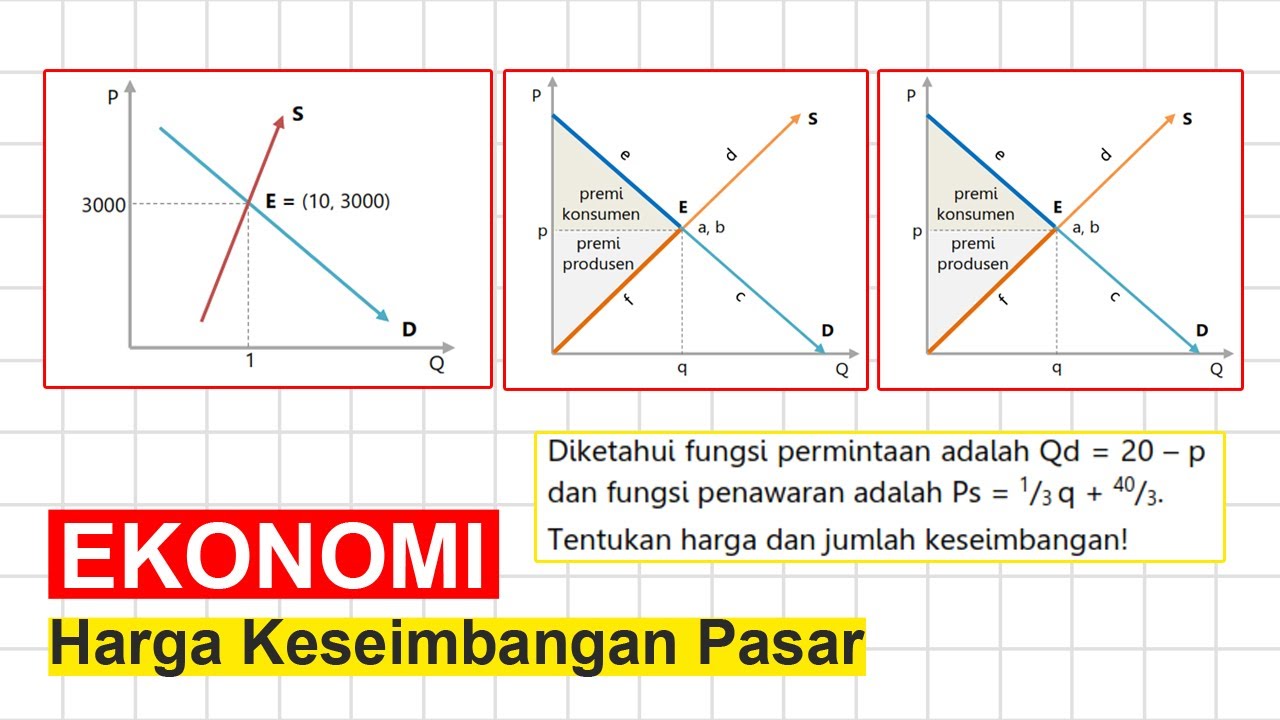Changing equilibria from trade | APⓇ Microeconomics | Khan Academy
Summary
TLDRThis video explores how international trade can impact the equilibrium price and quantity in a market. Using simplified examples of two countries, A and B, the instructor explains how opening economies to trade alters the combined supply and demand curves. Trade typically leads to a new equilibrium price between the two original autarkic prices, benefiting some groups while disadvantaging others. Consumers in country A and producers in country B gain from increased surplus, while suppliers in country A and consumers in country B experience reduced surplus. Overall, trade often boosts total consumer and producer surplus, despite creating winners and losers.
Takeaways
- 🌍 Trade can alter the equilibrium price and quantity in a market, as shown by comparing autarky to open economies.
- 📉 Country A and Country B, when in autarky (operating independently), have different demand and supply curves, leading to different equilibrium prices and quantities.
- 💸 In autarky, Country A has a higher equilibrium price (close to $4) and lower quantity compared to Country B (with a price around $1).
- 🤝 When the two countries trade, their combined market creates new equilibrium conditions, with the price now settling between their original prices.
- 📊 The new equilibrium quantity for the combined market increases due to trading, compared to when the countries were isolated.
- 🛒 Consumers in Country A benefit from trade as they now pay a lower price, increasing their consumer surplus.
- 🏭 Producers in Country B benefit by producing more and exporting to Country A, increasing their producer surplus.
- ⚖️ Some groups lose in trade: suppliers in Country A see their producer surplus shrink, and consumers in Country B now pay higher prices, reducing their consumer surplus.
- 📈 The overall consumer and producer surpluses in the combined economy are greater than they were in isolation, though individual outcomes vary.
- 🔄 Opening up economies from autarky usually leads to higher total surpluses, but it also creates winners and losers across different markets.
Q & A
What is the term used to describe a country that operates in isolation without trade?
-The term used is 'autarky,' which refers to a country operating independently without trading with other countries.
What happens to the equilibrium price and quantity in an autarky market?
-In an autarky, the equilibrium price and quantity are determined solely by the internal demand and supply of that country. For example, in country A, the equilibrium price is just under $4, and the equilibrium quantity is a little under four units.
How does opening trade between two countries affect their equilibrium price and quantity?
-When two countries open trade, their supply and demand curves are combined. This generally results in a new equilibrium price and quantity that is different from the autarky situation. In the example, the new equilibrium price is between the two original prices (under $3), and the equilibrium quantity increases to around 10 units.
Who benefits when trade opens between two countries?
-The main beneficiaries are the consumers in the country with the higher prices before trade (country A) and the producers in the country with the lower production costs (country B). Consumers in country A pay a lower price, and producers in country B can export more goods at a higher price.
Who loses when trade opens between two countries?
-The losers are the producers in the country with higher production costs (country A) who see their producer surplus shrink, and the consumers in the lower-cost country (country B) who have to pay a higher price after trade.
What happens to the consumer surplus in country A when trade is opened?
-In country A, consumer surplus increases significantly because the equilibrium price drops from just under $4 to just under $3, allowing consumers to buy more goods at a lower price.
How does the producer surplus change for country B after trade?
-In country B, the producer surplus increases because they can sell more goods at a higher price to the foreign market, boosting their overall revenue.
What is the impact of trade on the total consumer and producer surplus of both countries?
-Trade increases the total consumer and producer surplus of the combined economies. Although some groups may lose, the overall surplus for both countries is larger when trade is allowed compared to the autarky scenario.
How are imports and exports determined in this trade model?
-In the trade model, the difference between the domestic supply and demand is filled by imports or exports. For country A, the quantity of widgets demanded beyond what its suppliers can provide is imported from country B. For country B, the excess quantity produced beyond its domestic demand is exported to country A.
Why do proponents of free trade argue that it is beneficial?
-Proponents of free trade argue that it increases the overall consumer and producer surplus by allowing countries to specialize based on their comparative advantages. This leads to lower prices for consumers in high-cost countries and greater market opportunities for producers in low-cost countries.
Outlines

This section is available to paid users only. Please upgrade to access this part.
Upgrade NowMindmap

This section is available to paid users only. Please upgrade to access this part.
Upgrade NowKeywords

This section is available to paid users only. Please upgrade to access this part.
Upgrade NowHighlights

This section is available to paid users only. Please upgrade to access this part.
Upgrade NowTranscripts

This section is available to paid users only. Please upgrade to access this part.
Upgrade NowBrowse More Related Video
5.0 / 5 (0 votes)





